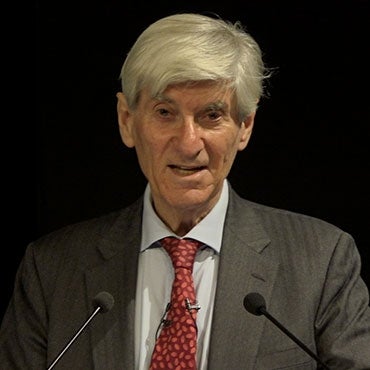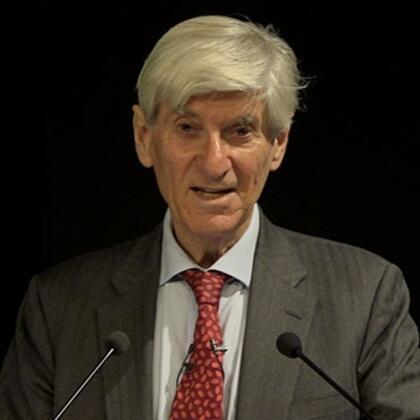Alternative Electoral Systems
Share
- Details
- Text
- Audio
- Downloads
- Extra Reading
In 1918, one commentator claimed that there were over 300 alternative electoral systems in existence. Human ingenuity being what it is, there are probably many more today. What are the main types? What would be the likely consequences of changing the electoral system for the House of Commons? There is no perfect system, but can agreement be reached on which is the best?
Download Text
ALTERNATIVE ELECTORAL SYSTEMS
Professor Vernon Bogdanor
1. Last time, we looked at the British electoral system, sometimes called first past the post, we noticed its weaknesses. They were:
a. That it made possible the election of a government on a minority of the popular vote – 35.2% in the recent general election – the lowest percentage of the vote secured by any government with a working majority in the 20th century. Nearly two-thirds of those voting voted against the government.
b. That some significant minorities were under-represented while others were not represented at all. The Liberal Democrats gained 22% of the vote but just 9.6% of the seats. It took 28,000 votes to elect a Labour MP, but over 96,000 votes to elect a Liberal Democrat MP.
The United Kingdom Independence Party – UKIP – which calls for withdrawal from the European Union – won over 600,000 votes but no seats at all. It was the 4th party in terms of voting strength, yet 7 parties winning fewer votes, including the SNP, Plaid Cymru, George Galloway’s `Respect’ party – did gain representation.
2. I argued that this bias in the electoral system was a result of four factors.
a. Boundaries out of date.
b. Tactical voting.
c. Turnout higher in Conservative seats.
d. The most important – and FUNDAMENTAL – reason – is that, under first past the post, the number of seats which a party wins depends not only upon the number of votes which it receives but on how these votes are distributed geographically. The system helps parties whose votes are geographically concentrated – e.g. Labour and Plaid Cymru – and disadvantages parties whose votes are more evenly spread across the country e.g. the Liberal Democrats and UKIP.
SO – a party whose vote is geographically concentrated will win a greater number of seats for a given vote than a party whose vote is more evenly spread.
3. Thus – in the 2005 general election – the electoral system failed to yield a government representing the majority, and failed to ensure that all significant minorities were represented.
I was asked during the discussion following the lecture whether there was a perfect electoral system – one which avoided these defects and did not introduce new defects.
The answer is an unequivocal ` NO’! There is no perfect electoral system. No doubt, if there were, every democracy would have adopted it by now.
4. There are a very large number of alternative electoral systems. As long ago as 1910, a Royal Commission, appointed to inquire into electoral systems, claimed that there were over 300 different systems, either actual or potential. Human ingenuity being what it is, there are probably many more than 300 systems today.
You will be pleased to hear that I do not intend even to attempt to describe the 300 systems! Many of them in fact are variations on basic types. Others are, for various reasons, generally agreed, even by those who favour electoral reform, to be unsuitable for one reason or another, for British conditions.
5. I will outline just 5 different systems.
a. The Alternative Vote system as used for elections to the Australian lower house.
b. The two ballot system, as used in elections to the French National Assembly.
These systems ensure that no candidate can secure election in a constituency on a minority of the vote. But they do not secure proportional representation. They are not systems of proportional representation. Indeed, under the alternative vote, Labour might well have won even larger and more disproportionate majorities in 1997, 2001 and 2005.
BUT – in 1998 – an Independent Commission on the Voting System, established by the government, and chaired by the late Lord Jenkins of Hillhead (Roy Jenkins), recommended :
c. The Alternative Vote with a top-up. The majority of MPs – 80 to 85% - would be elected through the alternative vote. The remainder would be chosen from party lists on a county basis to secure proportionality. Each county would have one or two extra `top up’ seats. This system would be more proportional than what we have now; but it would not be fully proportional. It would probably have yielded Conservative majorities in 1979, 1983 and 1987, but not in 1992, when the Conservatives gained a majority of only 12. It would probably have yielded Labour majorities in 1997 and 2001, but not in 2005
6. I will now outline two proportional representation systems, both of them currently used in Britain.
`Proportional representation’ is not the name of a single electoral system, but a generic term referring to a large number of electoral systems, some of which are already in use in the United Kingdom – for example, in elections to the London Authority, the European Parliament, and in elections to the devolved bodies in Scotland, Wales and Northern Ireland.
The various different systems of proportional representation all have this in common, however, that they seek to realize the ideal or principle of representing parties in accordance with the strength of support for them in the country.
We tend to think of our first past the system as the norm and proportional representation as something rather eccentric or odd. In fact, however, proportional representation systems are used by every European democracy except for Britain and France. Many people on the Continent regard our system as the anomaly!
d. The additional member system used in elections to the Scottish Parliament, the National Assembly of Wales and the London authority.
e. The second proportional representation system is the single transferable vote used in all elections in Northern Ireland except for elections to Westminster. It is also used for elections in the Irish Republic.
7. The additional member system combines a single-member constituency system with proportional representation. The voter has two votes, the first for a constituency member, as in Britain, the second for a party list. The voter is under no obligation to cast her second vote for the same party as the constituency candidate for whom she has cast her first vote. The voter may, for example, vote for a Labour candidate for the constituency, and for the Liberal Democrats on the list. There is a threshold of 5% and only parties achieving more than this secure representation.
8. The single transferable vote was invented in the 19th century by Thomas Wright Hill, the father of Rowland Hill, who invented the modern postal system. It won the support of the liberal political philosopher, John Stuart Mill.
This system requires multi-member constituencies – constituencies returning not one, but generally between three and five members. The voter instead of casting an `X’ vote for a single candidate, votes preferentially, `1’, `2’, `3’ etc.
If a voter’s first-preference vote cannot be used to help elect a candidate, either because the candidate has no chance of election, or because the candidate has more votes than she needs, then the vote is transferredto a second-choice candidate whose election it might help to secure.
Thus, the voter has a single vote which is transferable. The vote may be seen as an instruction to the returning officer to transfer the vote, in accordance with the voter’s preferences, so that it can be of maximum use in helping to elect a candidate.
9. SOME CONSEQUENCES OF PROPORTIONAL REPRESENTATION.
First – look at the actual experience of proportional representation in Britain. In Northern Ireland, it was introduced to contain extremists and to encourage the centre ground. It has not done very well so far in achieving these aims.
In Scotland, it was introduced in part to contain the SNP, and perhaps it has helped to achieve that.
In both Scotland and Wales, it has ensured that the Conservatives, who are a minority party, achieve effective representation. The late Labour Secretary of State for Scotland, Donald Dewar, called it an example of `charitable giving’!
In Scotland, since the Parliament was set up, in 1998, and for some of the time in Wales, proportional representation has led to coalition government.
There is no evidence so far that proportional representation has increased turnout.
What, then, would be the likely consequences of proportional representation at Westminster?
a. Coalition government. – unless one party secures 50% of the vote, something that has not happened in Britain since 1935.
b. Would it make it more difficult to dismiss an unpopular government – as occurred for example, in 1979, when Callaghan’s Labour government was replaced by Margaret Thatcher’s Conservatives; and in 1997, when Major’s Conservative government was replaced by Tony Blair’s Labour Party.
c. What would be the consequences for the MP/constituency relationship?
d. Would it give too much power to the political parties?
e. Would it secure greater representation for women and ethnic minorities?
f. Would it lead to more parties represented in the House of Commons?
g. Would it lead to extremist, and perhaps racist parties securing representation in the House of Commons?
h. Would it prevent strong government? What does strong government mean?
`No government which is in a large minority in the country, even though it possesses a working majority in the House of Commons, can have the necessary power to cope with real problems’.
(Winston Churchill, 1931)
Was he right?
BUT – there is no perfect electoral system!
Should there be a referendum on proportional representation?
© Professor Vernon Bogdanor, Gresham College, 20 September 2005
This event was on Tue, 20 Sep 2005
Support Gresham
Gresham College has offered an outstanding education to the public free of charge for over 400 years. Today, Gresham College plays an important role in fostering a love of learning and a greater understanding of ourselves and the world around us. Your donation will help to widen our reach and to broaden our audience, allowing more people to benefit from a high-quality education from some of the brightest minds.


 Login
Login







